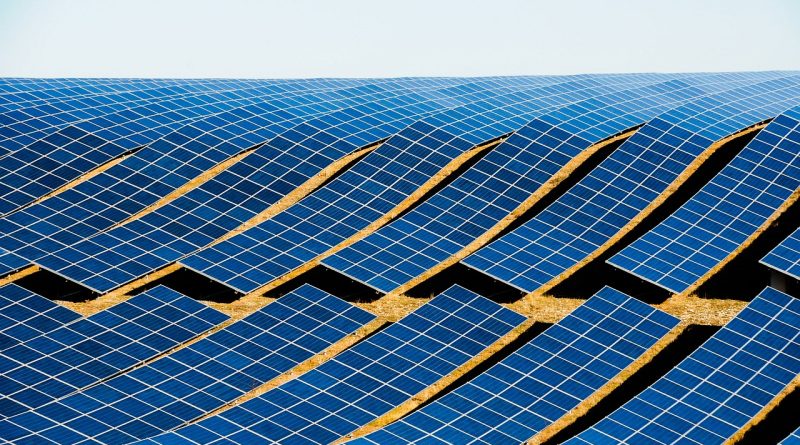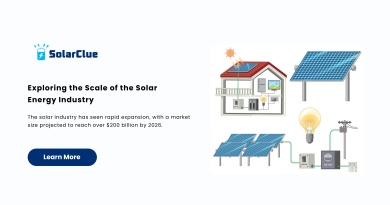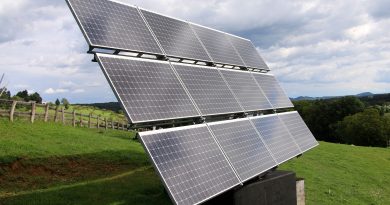Exploring Solar Energy Technology Types
Solar energy has emerged as one of the most significant renewable energy sources in recent years. This clean and abundant source of power is harnessed using various solar energy technologies. These technologies have evolved over time, catering to different needs and applications. In this blog, we will explore the different types of solar energy technology and their unique features, helping you gain a comprehensive understanding of this promising field.
Table of Contents
1. Photovoltaic (PV) Cells
Photovoltaic cells, commonly known as solar cells, are the most recognizable type of solar energy technology. They directly convert sunlight into electricity through the photovoltaic effect. These cells are often made of silicon, a semiconductor material that releases electrons when exposed to sunlight. The freed electrons create an electric current that can be captured and used for various energy applications.
Florida Solar Energy Center describes that photovoltaic cells come in various forms, including monocrystalline, polycrystalline, and thin-film cells. Monocrystalline cells, with their single crystal structure, deliver high efficiency but are relatively expensive. In contrast, polycrystalline cells combine multiple crystals, offering a more affordable alternative with slightly lower efficiency. Thin-film cells, on the other hand, are flexible and can be integrated into various surfaces, but they generally have lower efficiency levels.
2. Solar Thermal Energy
Solar thermal energy systems utilize the sun’s heat to generate electricity or provide heating for buildings and water. This technology harnesses solar radiation through three main types of systems: concentrating solar power (CSP), solar water heating, and passive solar heating.
Concentrating Solar Power (CSP) systems aim to intensify the sun’s rays using various mirror configurations, focusing the sunlight onto a receiver where it is converted into heat. This heat can then generate electricity using steam turbines or be stored for later use. CSP technology is particularly beneficial for large-scale power plants.
Solar water heating systems, as the name implies, use the sun’s heat to warm water. Typically, these systems consist of solar collectors that heat water, which can be used in homes, businesses, or industrial settings. By using solar thermal energy for water heating, significant energy savings can be achieved.
Passive solar heating systems integrate elements like large windows or heat-absorbing materials to capture and store the sun’s heat in buildings. These systems help in reducing heating costs by using the sun’s energy to naturally warm indoor spaces.
3. Solar Thermal Electrics (STE)
Solar Thermal Electrics (STE) or concentrating solar power (CSP) systems differ from conventional solar thermal energy systems by storing the sun’s thermal energy as heat instead of converting it directly into electricity. STE systems often use lenses or mirrors to focus sunlight onto a receiver, where a heat transfer fluid is heated. This fluid can then generate steam, which drives a turbine to produce electricity.
CSP systems can be categorized based on their methods of focusing sunlight. Parabolic troughs, for instance, consist of curved mirrors that concentrate sunlight onto a receiver tube. This set-up is commonly used in thermal power plants due to its simplicity and efficiency.
Solar power towers, on the other hand, use a field of mirrors called heliostats to direct sunlight onto a central tower. The concentrated heat raises the temperature of a fluid that can be used to power turbines and produce electricity.
4. Solar Air Conditioning
Solar air conditioning systems, also known as solar cooling, combine solar thermal energy with conventional air conditioning technology to provide cooling in buildings. These systems work by collecting solar energy to generate heat, which then powers an absorption chiller to produce cold air.
Such systems use solar thermal collectors to capture the sun’s heat and transfer it to an absorption chiller that cools the air. These solar-powered cooling systems are particularly useful in regions with abundant sunlight, where cooling demand is high.
5. Solar Desalination
Solar desalination uses solar energy to remove salt and impurities from seawater, making it suitable for human consumption or irrigation purposes. This technology can alleviate water scarcity in arid regions, providing a sustainable solution for freshwater production.
Solar desalination systems typically employ solar stills or solar-powered reverse osmosis systems. Solar stills absorb sunlight to evaporate water, leaving behind the salts and impurities. The water vapor is then collected and condensed into freshwater. In the case of reverse osmosis, solar energy powers the desalination process, pushing seawater through specialized membranes to filter out impurities.
Conclusion
Explore the solar energy spectrum with SolarClue®’s guidance on various solar technologies. Understand the distinctions between solar photovoltaic (PV), solar thermal, and concentrated solar power (CSP) systems. Delve into the workings of PV systems, including monocrystalline, polycrystalline, and thin-film solar cells. Explore solar thermal technologies with information on collectors like flat-plate, evacuated tube, and concentrating collectors. Grasp the principles of concentrated solar power (CSP) and its applications in power plants. Discover the applications of solar technologies in residential, commercial, and industrial settings. Stay informed about emerging technologies and their environmental impact. Receive personalized advice for choosing the right solar technology based on location, climate, space, and energy needs. Embrace decentralized solar solutions for remote areas. Join SolarClue® in advocating for diverse solar technologies, contributing to a sustainable energy future.
Frequently Asked Questions
SolarClue® elucidates the different types of solar energy technologies, distinguishing between solar photovoltaic (PV), solar thermal, and concentrated solar power (CSP) systems. We provide guidance to help individuals understand the unique features and applications of each technology.
SolarClue® explains the working principles of solar photovoltaic (PV) systems, detailing the process of converting sunlight into electricity. We offer insights into various PV technologies, including monocrystalline, polycrystalline, and thin-film solar cells for a comprehensive understanding.
SolarClue® assists individuals in exploring solar thermal technologies. We provide information on various types of solar collectors, including flat-plate, evacuated tube, and concentrating collectors. We explain their applications in heating and power generation for a thorough exploration.
SolarClue® guides individuals in understanding the principles of concentrated solar power (CSP) systems. We detail the use of mirrors or lenses to focus sunlight onto a small area for heat generation. We explain how this heat is utilized in power plants for electricity production, providing a comprehensive overview.
SolarClue® elaborates on the applications of solar energy technologies in various settings. We showcase how each type of solar technology is suitable for specific energy needs and consumption patterns in residential, commercial, and industrial environments, offering tailored solutions for diverse applications.
SolarClue® stays updated on emerging solar energy technologies and innovations. We provide individuals with information on the latest advancements, breakthroughs, and experimental technologies in the solar industry, offering a futuristic outlook and insights into the evolving landscape.
SolarClue® addresses the environmental impact of different solar energy technologies. We offer insights into life cycle assessments, carbon footprints, and sustainability aspects associated with the production, operation, and disposal of solar panels and related components, promoting eco-friendly choices.
SolarClue® guides individuals in choosing the right solar technology for their specific needs. We consider factors like geographic location, climate conditions, available space, and energy requirements to ensure an optimal and cost-effective solar solution, offering personalized advice for informed decision-making.
SolarClue® fosters awareness about decentralized solar technologies. We showcase the potential of solar home systems, portable solar devices, and off-grid solutions in providing clean energy access to remote or underserved areas, emphasizing their role in promoting energy equity.
SolarClue® engages with policymakers, industry stakeholders, and the public to advocate for the adoption and integration of diverse solar energy technologies. We contribute to the transition towards a sustainable and renewable energy future, fostering collaboration and awareness for widespread solar adoption.




